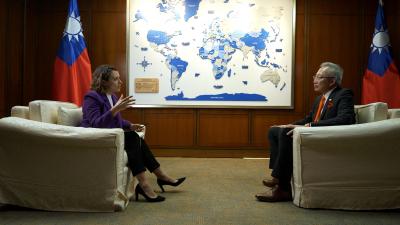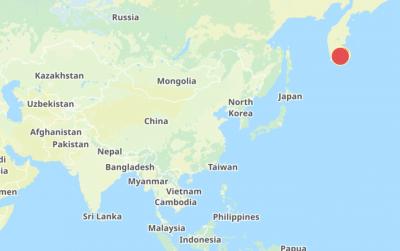National Health Insurance coverage of drugs to counter osteoporosis as of March 1 was expanded to include people diagnosed as high-risk from the disease, even if they have not had a fracture, benefiting an estimated 130,000 people a year, the National Health Insurance Administration (NHIA) said yesterday.
Coverage was expanded to include people with rheumatoid arthritis — as the steroids used to treat the condition can lead to loss of bone density — and others on long-term steroid prescriptions, those with diabetes who use insulin and those who have fractured a distal radius or proximal humerus, the agency said.
One in seven people aged 65 or older have osteoporosis, NHIA Director-General Shih Chung-liang (石崇良) said, adding that Taiwan is on its way to becoming a super-aged society, with 19 percent of the population in the age group.

Photo: CNA
A “super-aged society” is defined as having more than 20 percent of the population aged 65 or older.
Based on recommendations from medical societies and discussions with experts, a consensus was reached to expand coverage for osteoporosis medication, allocating an additional NT$865 million (US$28.55 million), Shih said.
Taiwanese Osteoporosis Association chair Chen Chung-huan (陳崇桓) said that an estimated 1.5 million Taiwanese aged 65 or older have osteoporosis.
Osteoporosis has no obvious symptoms in its early stages, which is why it is often called “the invisible killer,” Chen said.
Women often experience accelerated bone loss during menopause, making them a high-risk group, he said.
After their first osteoporotic fracture, 45 percent of elderly people have another fracture within one year, he said.
The three major signs of osteoporosis are a hunched back with a gap of over 3cm between the back of the head and a wall when standing against it, height loss of more than 4cm and osteoporotic fractures, he added.
Taiwan College of Rheumatology secretary-general Lu Chun-chi (盧俊吉) said that nearly 40 percent of people with rheumatoid arthritis also have osteoporosis.
The longer people use steroids and the higher the dosage, the higher the risk of fracture, Lu said.

“China is preparing to invade Taiwan,” Deputy Minister of Foreign Affairs Francois Wu (吳志中) said in an exclusive interview with British media channel Sky News for a special report titled, “Is Taiwan ready for a Chinese invasion?” the Ministry of Foreign Affairs said today in a statement. The 25-minute-long special report by Helen Ann-Smith released yesterday saw Sky News travel to Penghu, Taoyuan and Taipei to discuss the possibility of a Chinese invasion and how Taiwan is preparing for an attack. The film observed emergency response drills, interviewed baseball fans at the Taipei Dome on their views of US President

The Central Weather Administration (CWA) today issued a "tsunami watch" alert after a magnitude 8.7 earthquake struck off the Kamchatka Peninsula in northeastern Russia earlier in the morning. The quake struck off the east coast of the Kamchatka Peninsula at 7:25am (Taiwan time) at a depth of about 19km, the CWA said, citing figures from the Pacific Tsunami Warning Center. The CWA's Seismological Center said preliminary assessments indicate that a tsunami could reach Taiwan's coastal areas by 1:18pm today. The CWA urged residents along the coast to stay alert and take necessary precautions as waves as high as 1m could hit the southeastern

The National Museum of Taiwan Literature is next month to hold an exhibition in Osaka, Japan, showcasing the rich and unique history of Taiwanese folklore and literature. The exhibition, which is to run from Aug. 10 to Aug. 20 at the city’s Central Public Hall, is part of the “We Taiwan” at Expo 2025 series, highlighting Taiwan’s cultural ties with the international community, National Museum of Taiwan Literature director Chen Ying-fang (陳瑩芳) said. Folklore and literature, among Taiwan’s richest cultural heritages, naturally deserve a central place in the global dialogue, Chen said. Taiwan’s folklore would be immediately apparent at the entrance of the

ECONOMIC BENEFITS: The imports from Belize would replace those from Honduras, whose shrimp exports have dropped 67 percent since cutting ties in 2023 Maintaining ties with Taiwan has economic benefits, Ministry of Foreign Affairs officials said yesterday, citing the approval of frozen whiteleg shrimp imports from Belize by the Food and Drug Administration (FDA) as an example. The FDA on Wednesday approved the tariff-free imports from Belize after the whiteleg shrimp passed the Systematic Inspection of Imported Food, which would continue to boost mutual trade, the ministry said. Taiwan’s annual consumption of whiteleg shrimps stands at 30,000 tonnes, far exceeding domestic production, the ministry said. Taiwan used to fill the gap by importing shrimps from Honduras, but purchases slumped after Tegucigalpa severed diplomatic ties with Taiwan